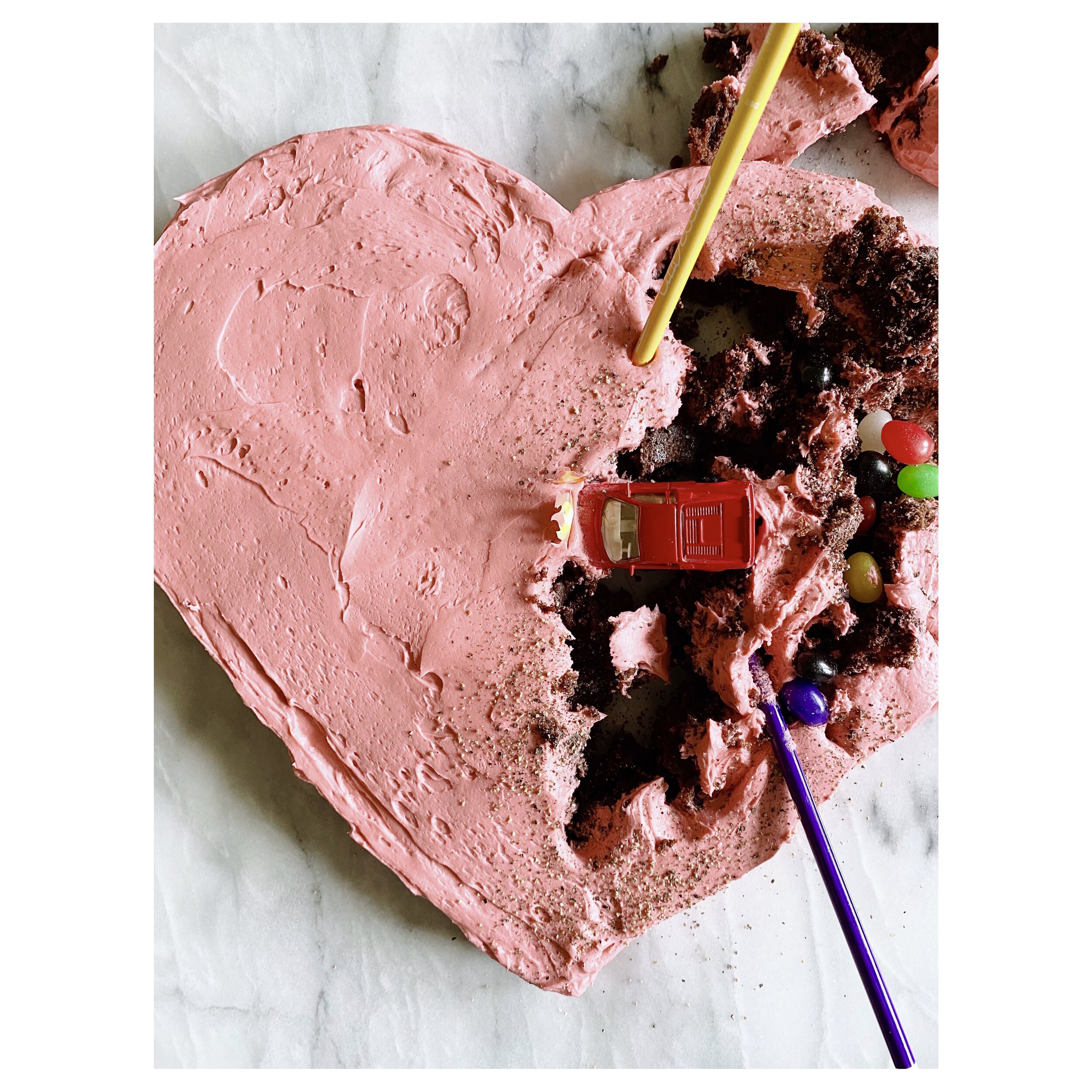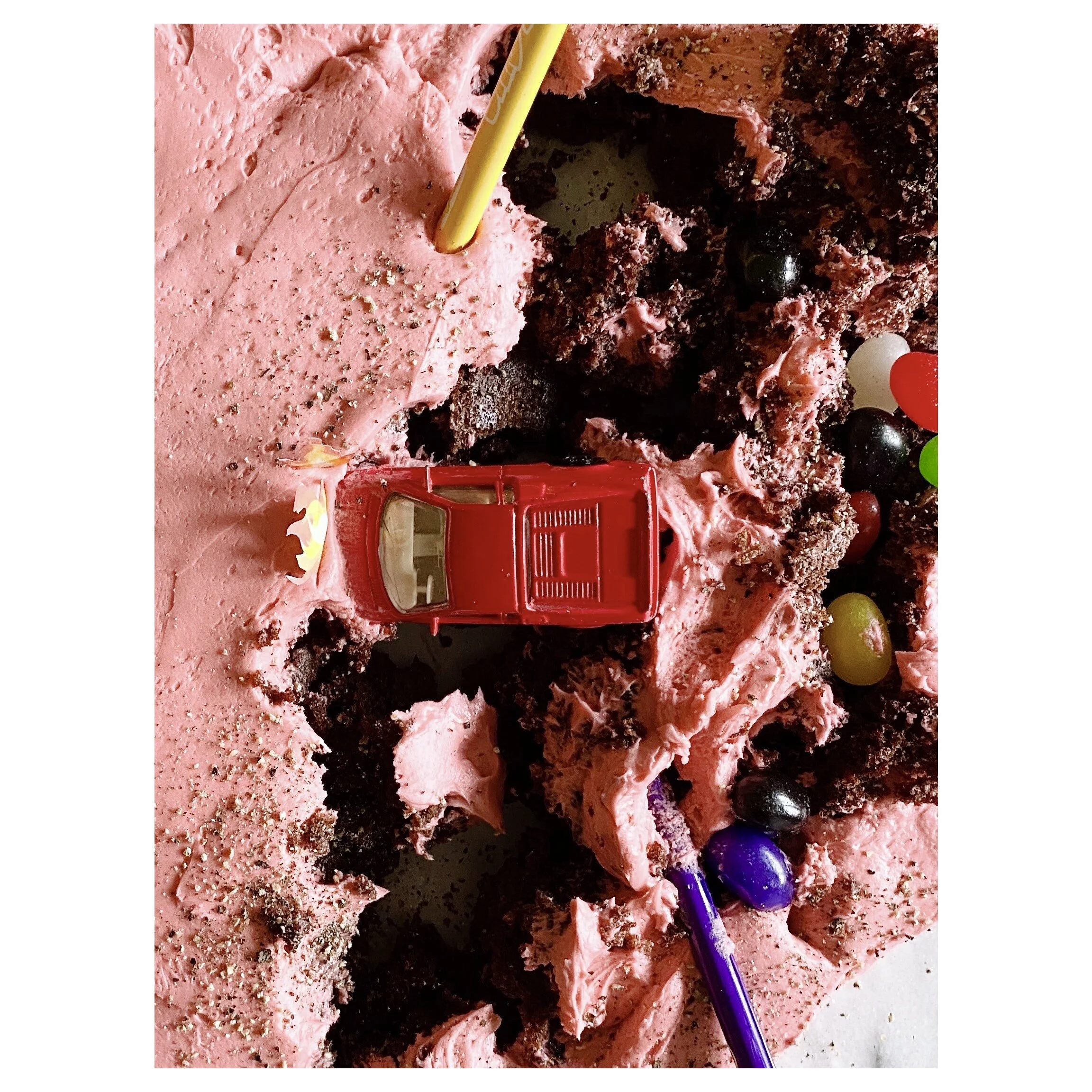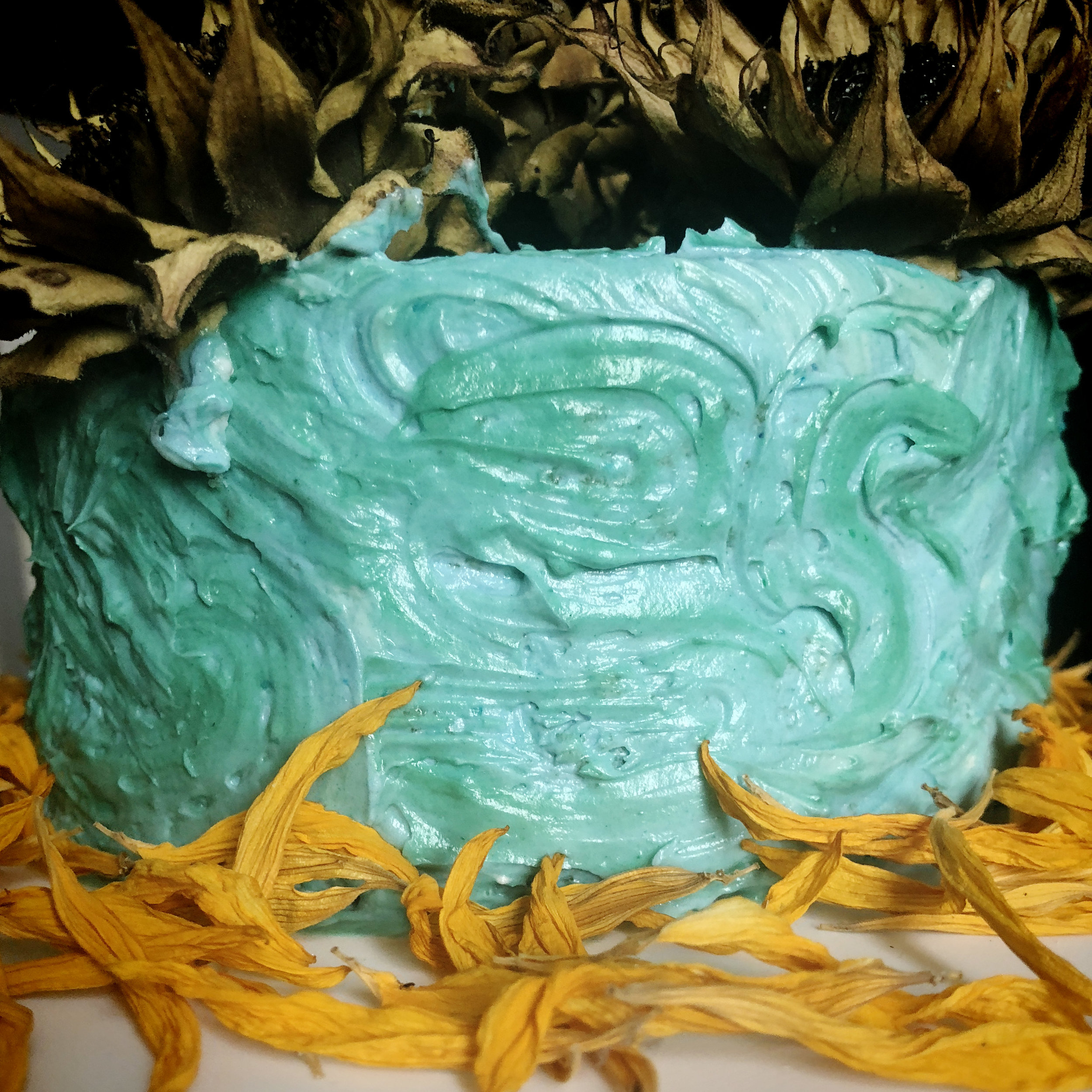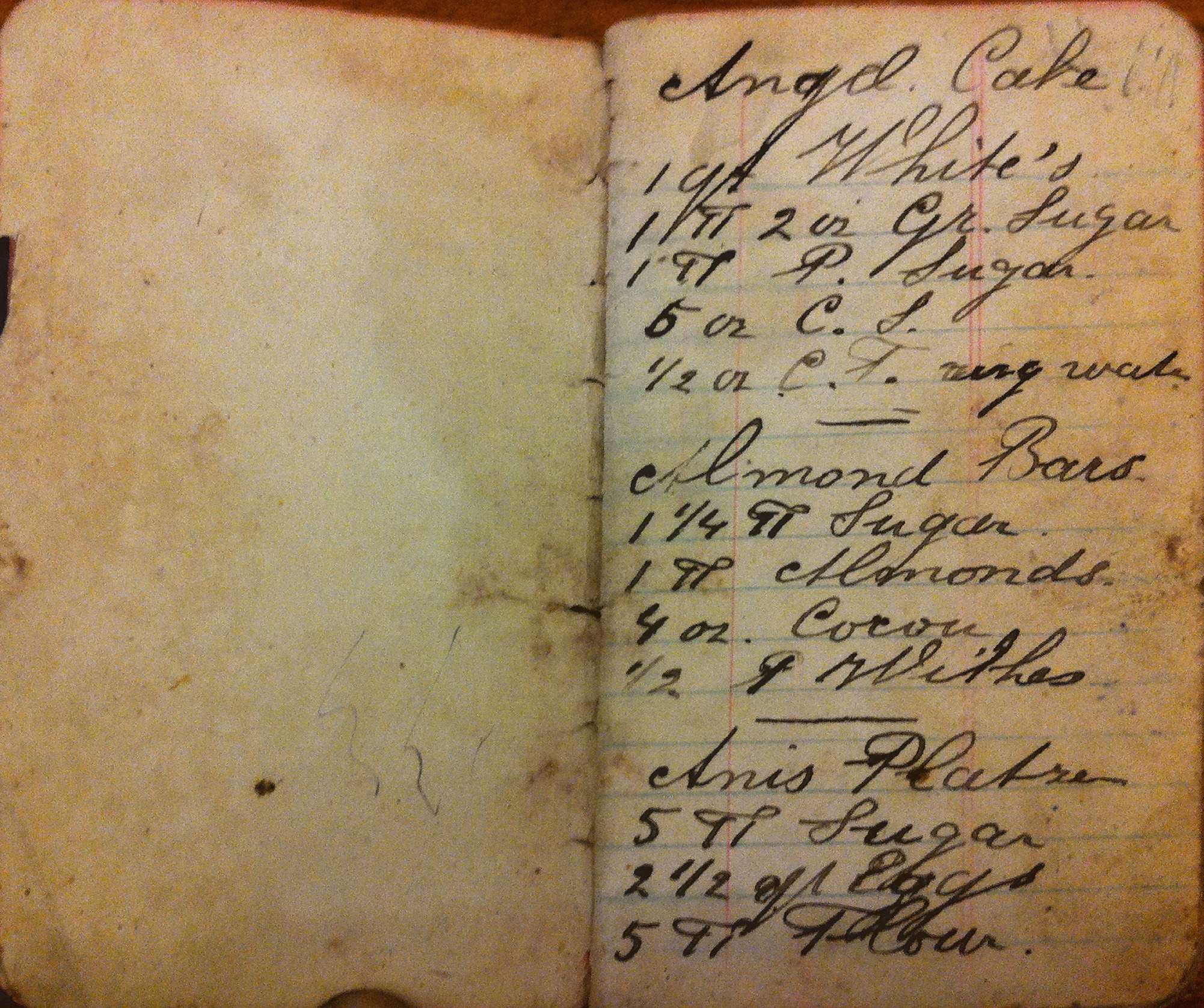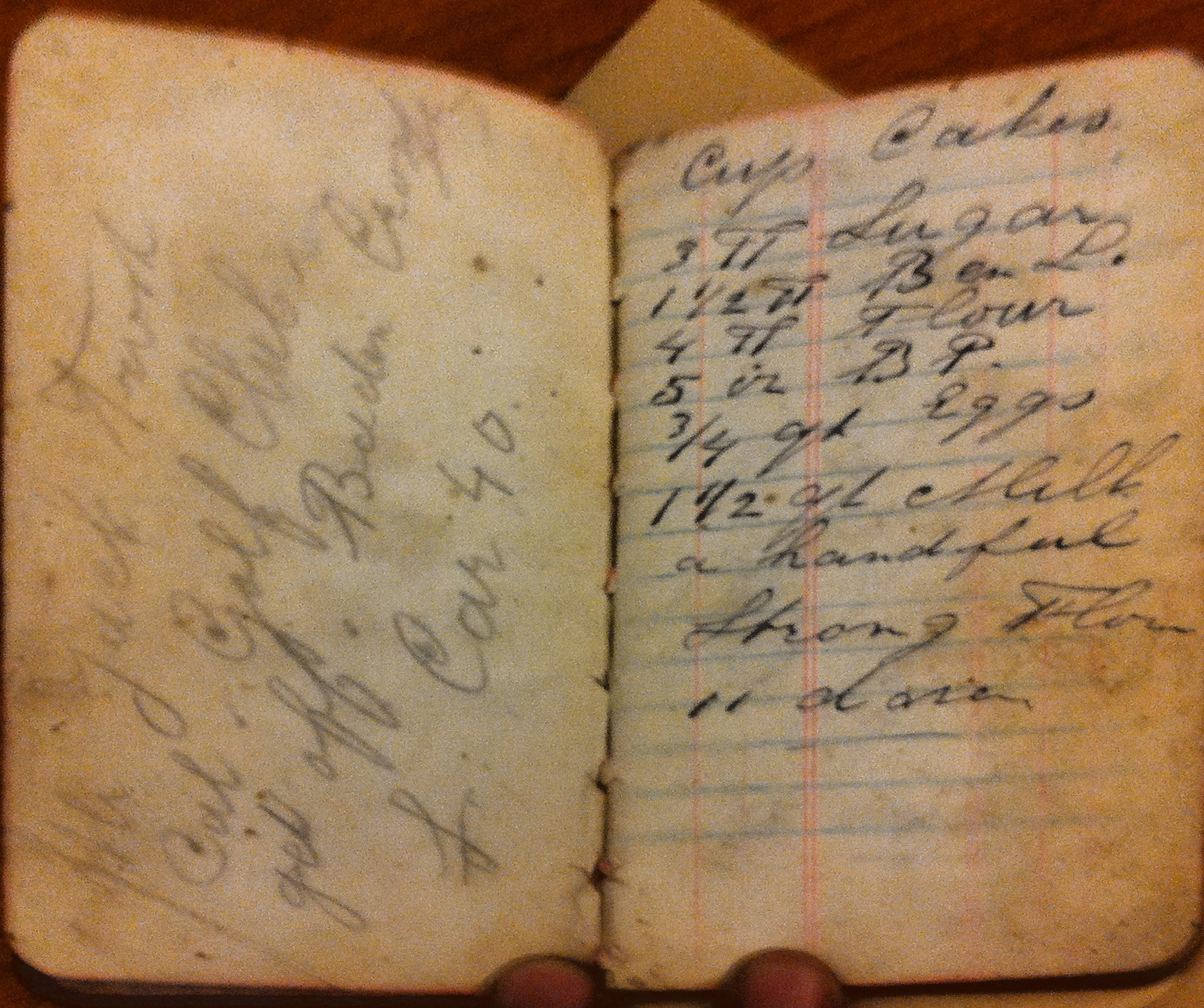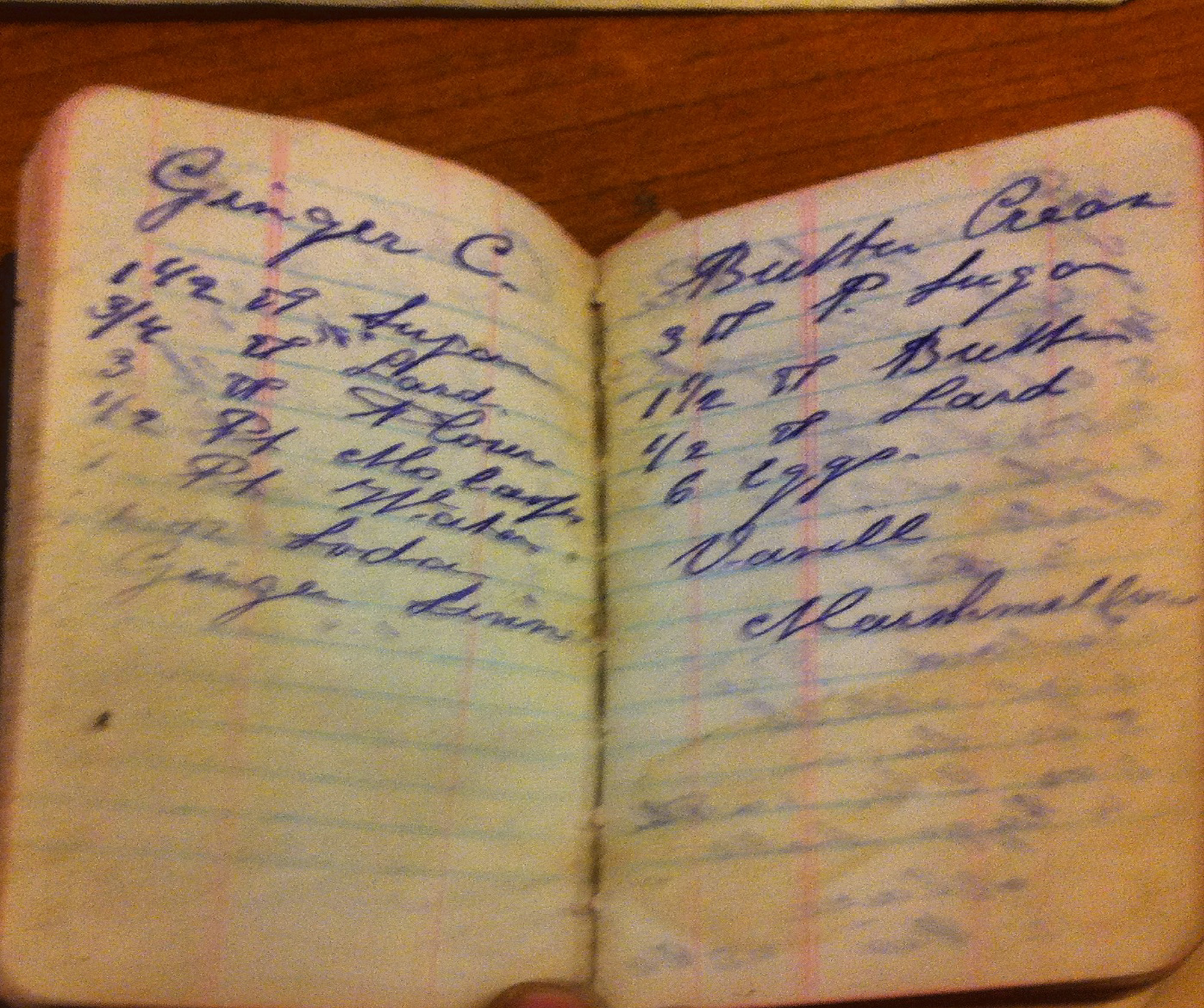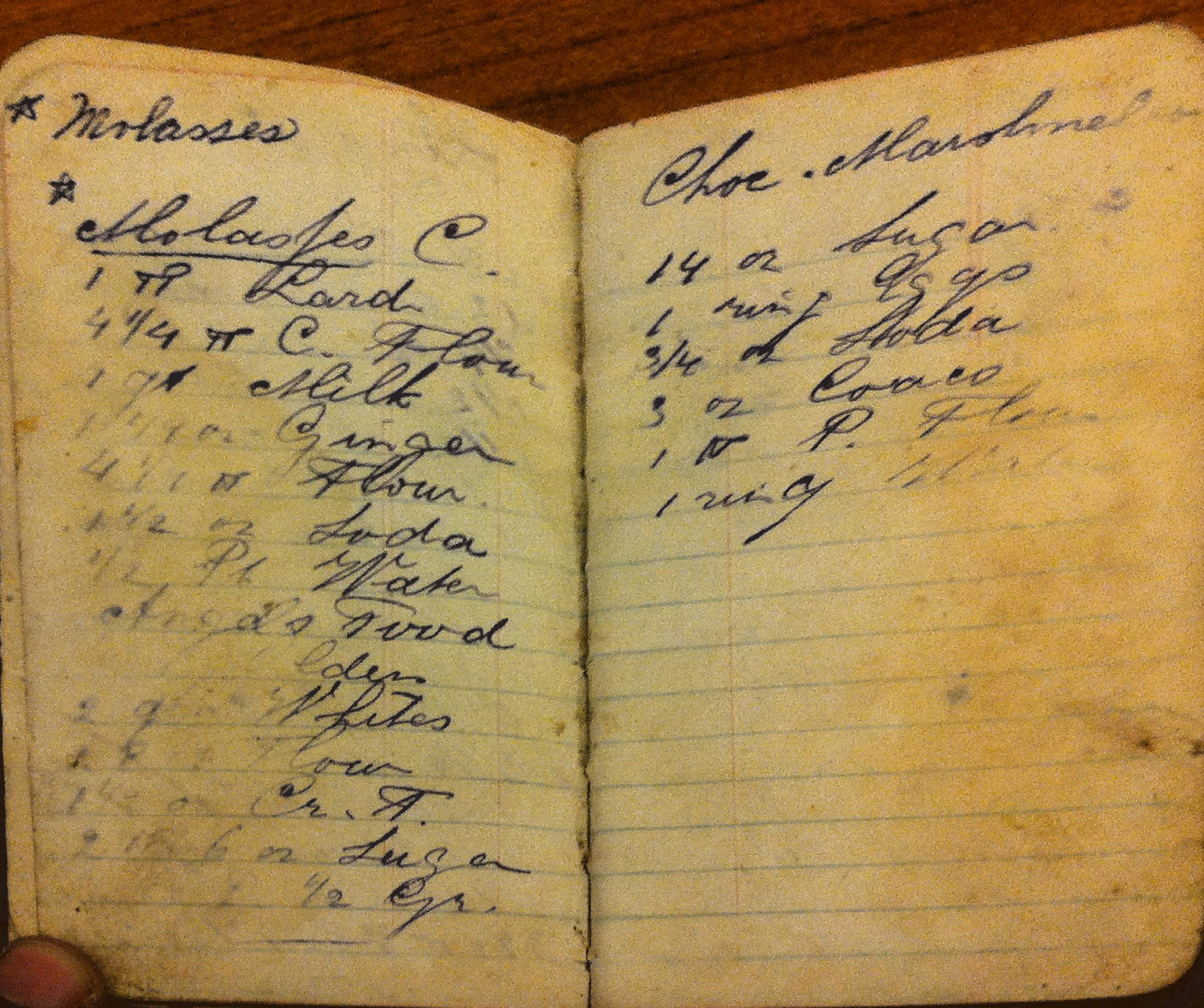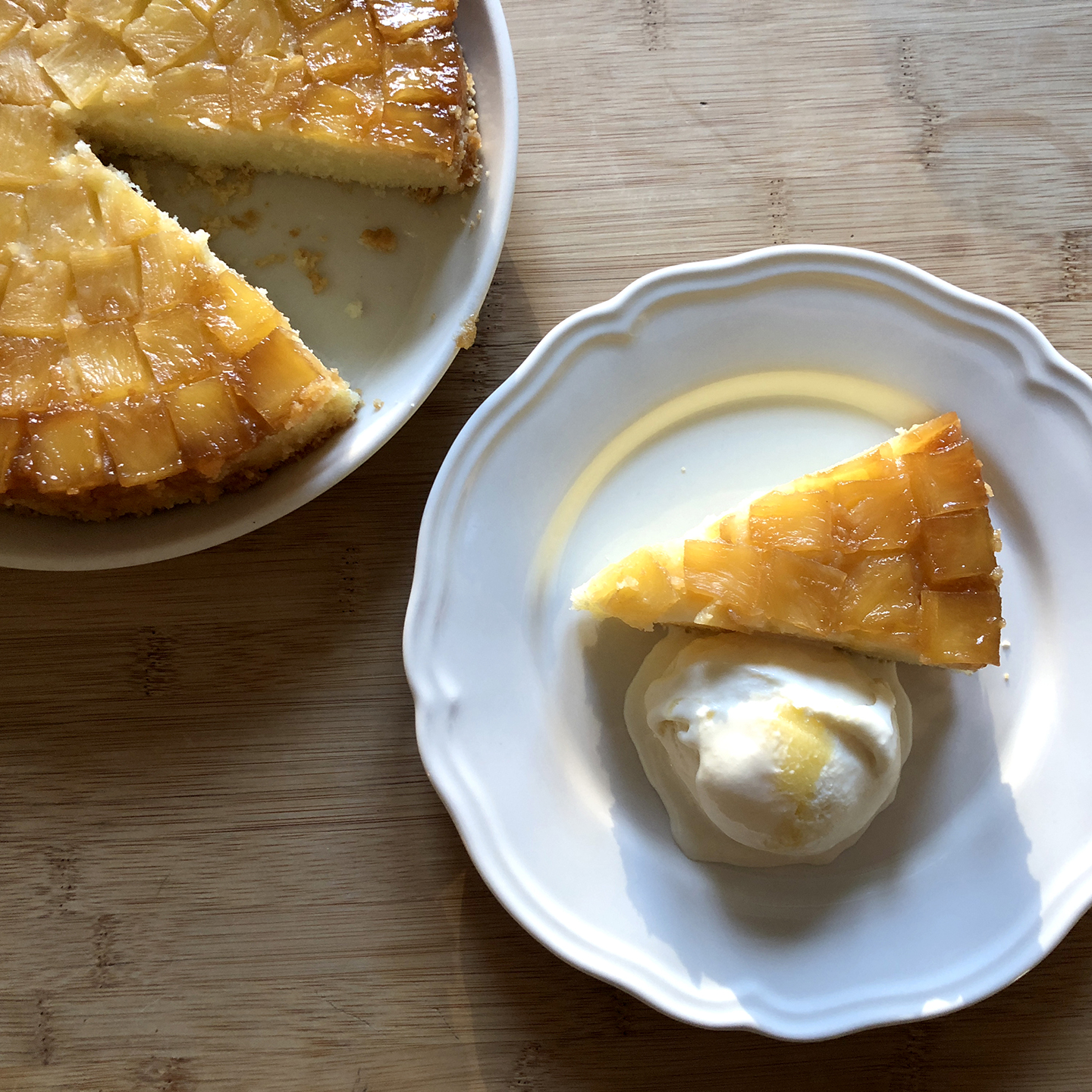How to Eat Strawberry Shortcake
1. Crave Strawberry Shortcake.
2. Decide that’s what’s for lunch. Think of options. Think of rolling pins and biscuit cutters.
3. Feel lazy.
4. Wash, hull, and slice up some strawberries. How ever many you’d like.
5. Throw them into a saucepan set over medium-low heat. Squeeze in the juice of half a lemon, take out the seeds, and let simmer, stirring occasionally, until it’s the way you like it. Remove from the heat and let cool.
6. Meanwhile, brush 1 t neutral oil over the bottom of an 8” round cake pan and slide it into a cold oven. Turn the oven up to 425 degrees.
7. In a large bowl, whisk together 2 c (250 g) all-purpose flour, 3 t baking powder, 1 T sugar (2 if you like it sweeter), and ½ t fine sea or table salt.
8. Take one stick of unsalted butter from the fridge. Dice it up into ½” cubes and toss them about the flour mixture. Start doing that wonderfully pleasant thing where you rub the fat into the flour, slippery discs of butter meeting puffs of white. Think about nice things and keep doing this until the mixture is mostly mealy with a few pea-sized lumps of butter.
9. Stir in 1 c (240 g) heavy cream with a wooden spoon. When that gets too annoying, use your hands to gently combine.
10. Carefully take that hot cake pan out of the oven and dump in the dough. Wet your hands, shake them off so they’re not dripping, and use your now dampish hands to press the dough about just a little bit trying to get it into all areas of the pan. Try not to burn your fingers. Fail.
11. Put the pan back into the oven and bake for 17-20 minutes until the top is golden brown.
12. Let cool in the pan on a rack for 10 minutes then remove to cool completely. Some of it may fall apart. Put those bits in a bowl for later.
13. Glug cold heavy cream into a large bowl. How much? Depends on how much whipped cream you want. Whip the cream, spooning in some confectioners sugar if you’d like.
14. Now that we are here, you’ve got a few options. Spoon some strawberries and whipped cream into the bowl of bits that fell away. That didn’t happen? Tear off a chunk of the biscuit and berry and cream away. Or, go the way of the gluttonously lazy (me) and put the entire biscuit on a nice plate. (I said gluttonously lazy, not boorish.) Spoon some strawberries and cream over one corner, however vast desire takes you. Eat with relish.
15. Repeat. Repeat. Repeat
16. What remains will keep for another day, maybe two, covered tightly in foil. Freezes well. Just defrost and warm in a 350 degree oven for 10 min or so.
There is always more to the story
When a family member calls at seven am, squelch of panic in the body, and you forego “hello” for “is everything okay?” and it is at that moment okay, I suppose, but not really because you learn that his dementia has gone from mild to moderate in six months and things are changing fast and he can’t drive anymore and he’s such an independent person, now was, and there’s really no other choice, you live thousands of miles away and did notice a significant change when visiting during the holidays, a quiet absence, almost like a whisper or something seen out of the corner of your eye, and he didn’t play his piano, not even once, which has never happened ever since you were a little girl who liked to play under that (or really a different one but) baby grand, who scored a place in the college honors program with an essay about his piano but I digress and switch grammatical personas and tenses like someone whip-changing lanes on the highway (without signaling), but there’s so much up and down and some sort of figurative messiness is necessary and in some ways, I suppose, literal is as well (the dishes!). Sort of. I don’t know. Emotions complex. Confusing. There was good, yes, and a lot of bad. There is always more to the story. I need control. I need magic. I need to bake.
Flourless Chocolate Prune Cake with Rosemary Salted Whipped Cream,
or,
A Cake for
Love (Chocolate and Vanilla),
Longevity (Prune; Plum)
Memory (Rosemary),
Purification (Salt),
and Healing (Orange snuck into the cake).
Note: this recipe was written a bit off kilter because sometimes I just can’t stick to the script so please feel free to email me if you need clarification, hello@thecakehistorian.com.
For the Rosemary Salted Whipped Cream:
1/2 c (120 g) heavy cream
pinch of sea salt
2 small sprigs fresh rosemary
In a small saucepan warm the cream and salt over medium heat until bubbles appear at the edge and a bit of steam begins to drift up. Remove from the heat and slip the rosemary springs into the cream, swishing a bit to fully dress the sprigs in white. Let sit for 30 min then remove the rosemary sprigs and refrigerate the cream to cold cold cold while you make the cake.
For the Flourless Chocolate Prune Cake (recipe adapted from David Lebovitz):
3 ounces (85 g) pitted prunes
3 T (45 g) orange juice
1 T vanilla extract
2 T granulated sugar, divided into 1/2 T and 1 1/2 T
6 ounces (170 g) bittersweet chocolate in chips or chopped up
6 T (84 g) unsalted butter
3 large eggs, separated
1) Butter and flour (or cocoa) a 6” springform pan, line the bottom with parchment paper, and preheat the oven to 325°
2) Prepare the prunes: combine the first three ingredients plus the 1/2 T of sugar in a small saucepan over medium heat. Bring to a boil then turn down to medium-low and let simmer until the liquid has absorbed into the prunes. This took about 5 min for me. Remove from the heat and use a spoon or fork to mush up the mixture, breaking about the prunes even more. You’re not trying to create a puree here just smaller bits of the perfumed prunes to mix about in the batter. Set aside.
3) Melt the chocolate and butter together in a medium-sized heat-proof bowl* set over a pot of simmering water. Remove the lot from the heat, then the bowl from the pot and into it stir the prunes. Let cool for 8 minutes. *(you’ll be mixing all of the cake batter in this bowl so keep that in mind when selecting size)
4) Whisk the egg yolks to combine then fold into the chocolate prune mixture.
5) Whip the egg whites with a pinch of salt, slowly adding the remaining 1 1/2 T of sugar until stiff peaks. Fold into the batter, gentle gentle, until no streaks of white remain.
6) Keep up the gentle gentle as you spoon the batter into the prepared pan, smoothing the top with an offset spatula.
7) Bake for 40-45 min until the toothpick test comes back clean and the cake starts to pull away from the sides.
8) Let cool on a rack for 10 minutes then remove the ring and let the cake cool completely.
Just before serving the cake whip up the cold cream then pile atop the cake.
I did not add any sweetener to my cream but feel free to add powdered sugar to your liking. Alternately, top the cake with powdered sugar before the cream or serve each slice of cake with a dollop of the whipped cream on top and offer up powdered sugar.
A Cake for Troubled Times
Personal trouble, world trouble, political trouble, family trouble, mental trouble, so much trouble these days. The list seems endless and the feeling—oh, the feeling—a weight on my chest. I am reminded of Giles Corey, the man accused of witchcraft in 17th century Salem who was pressed to death, rock after rock placed atop a board covering his chest, yet he only kept saying “more weight”. I am no Giles Corey, of course. It is solely my brain metaphorically placing rock after rock even though I keep pleading “less weight. Please, less weight.” And I don’t know how to really talk about what’s happening yet, with me, with the world. I keep trying and the words keep either twisting into impossible knots or fading like disappearing ink.
Lemon sometimes helps, like the juice and heat work together to reveal these hidden words, and I’ve been baking so much with lemon lately yet still . . .
Did you read The Particular Sadness of Lemon Cake?
Cake. I may not have the words but I do have cake, a language that never fails me, and I have the words of others, their poetry concise and beautiful and articulating what I can not.
So, all that said, I will share both with you in hopes that, may you too be experiencing troubled times, either or both provide hope and solace.
A Cake for Troubled Times
I went to my books of magic and correspondence and meaning and symbol. Sometimes I need to look further than my cookbook shelf to bake what I need. This recipe has Chocolate for healing and positive energy. Maple sugar for the latter too; black pepper and clove for dispelling negativity; cinnamon for focus; coffee for clarity; walnut for wishes; yogurt to ease depression; baking powder for extra magic. The flower stenciled out on top is a snow drop which, in the Victorian Language of Flowers, means hope.
If the notion of magic is not your thing, then take that with a grain of salt. It is, after all, also just a Chocolate Spice Cake.
Dry:
1 1/4 c (156 g) all-purpose flour
3/4 c (64 g) dutch process cocoa power (I used 40 g Valrhona and 24 g black cocoa)
1 t baking powder
1 t baking soda
1/4 t freshly ground black pepper
1/4 t ground cloves
1 t cinnamon
Wet:
3/4 c (150 g) maple sugar
1/4 c (50 g) granulated sugar
2 large eggs
112 g walnut oil
240 g whole milk yogurt
2 t coffee extract
1. Prepare a 9” round cake pan and preheat your oven to 350°
2. In a medium bowl, sift (please do sift) together the dry ingredients.
3. In a large bowl, whisk together the wet ingredients.
4. Whisk the dry ingredients into the wet until thoroughly incorporated.
5. Pour the batter into the prepared pan and bake 28 to 32 minutes until the cake starts to pull away from the sides of the pan, the top springs back lightly when pressed in the middle, and, if you need extra reassurance, a toothpick inserted in the center comes back clean or with just a few crumbs attached.
Let cool in the pan for 10 minutes then remove to a rack to cool completely. Dust with confectioners sugar as desired, stencil or not. I hope your troubled times end soon.
The Poems. Just a few. If you have one, please do share it with me.:
What Kind of Times Are These by Adrienne Rich
There's a place between two stands of trees where the grass grows uphill
and the old revolutionary road breaks off into shadows
near a meeting-house abandoned by the persecuted
who disappeared into those shadows.
I've walked there picking mushrooms at the edge of dread, but don't be fooled
this isn't a Russian poem, this is not somewhere else but here,
our country moving closer to its own truth and dread,
its own ways of making people disappear.
I won't tell you where the place is, the dark mesh of the woods
meeting the unmarked strip of light—
ghost-ridden crossroads, leafmold paradise:
I know already who wants to buy it, sell it, make it disappear.
And I won't tell you where it is, so why do I tell you
anything? Because you still listen, because in times like these
to have you listen at all, it's necessary
to talk about trees.
The Way It Is by William Stafford
There’s a thread you follow. It goes among
things that change. But it doesn’t change.
People wonder about what you are pursuing.
You have to explain about the thread.
But it is hard for others to see.
While you hold it you can’t get lost.
Tragedies happen; people get hurt
or die; and you suffer and get old.
Nothing you do can stop time’s unfolding.
You don’t ever let go of the thread.
Oh Me! Oh Life! by Walt Whitman
O Me! O life!... of the questions of these recurring; Of the endless trains of the faithless—of cities fill’d with the foolish; Of myself forever reproaching myself, (for who more foolish than I, and who more faithless?) Of eyes that vainly crave the light—of the objects mean—of the struggle ever renew’d; Of the poor results of all—of the plodding and sordid crowds I see around me; Of the empty and useless years of the rest—with the rest me intertwined; The question, O me! so sad, recurring—What good amid these, O me, O life? Answer. That you are here—that life exists, and identity; That the powerful play goes on, and you will contribute a verse.
One Art by Elizabeth Bishop
The art of losing isn’t hard to master;
so many things seem filled with the intent
to be lost that their loss is no disaster.
Lose something every day. Accept the fluster
of lost door keys, the hour badly spent.
The art of losing isn’t hard to master.
Then practice losing farther, losing faster:
places, and names, and where it was you meant
to travel. None of these will bring disaster.
I lost my mother’s watch. And look! my last, or
next-to-last, of three loved houses went.
The art of losing isn’t hard to master.
I lost two cities, lovely ones. And, vaster,
some realms I owned, two rivers, a continent.
I miss them, but it wasn’t a disaster.
—Even losing you (the joking voice, a gesture
I love) I shan’t have lied. It’s evident
the art of losing’s not too hard to master
though it may look like (Write it!) like disaster.
That Fine Line Between Poison and Pleasure
Back in late June, Samin Nosrat published an article in the New York Times, How to Unlock the Secret Flavor Hidden at the Apricots Core.
Gentl and Hyers for The New York Times. Food stylist: Maggie Ruggiero. Prop stylist: Pamela Duncan Silver.
In it, she waxes poetic about the beauty of that blessed summer fruit and its useful pit. “I pocket every one I encounter . . . at some point every summer I wake up to find apricot pits strewn in my bed. I find them in my pockets and at the bottom of my purse. I find them stuck in the lint trap, where I gingerly dig them out, free them of debris and return them to my pockets so I can add them to the stash in my freezer.”
Nosrat then goes on to describe taking the hoarded bag of pits outside where she “dump[s] everything out on a towel” set upon the concrete and uses a hammer to—as gingerly as possible—smash each pit open to reveal the creamy-tinted kernel, the prize: the noyaux.
Take that, Bonne Mamam (I still love you though)! Photo from here
Tied up in a bag and added to a pot of simmering apricot jam, the noyaux will impart their intoxicating aroma, their “faint scent of almonds and flowers” into the jam.
The liberated noyaux may also be added to a jar of booze and left for a few months to create an extract unlike any other.
The only problem is that the noyaux of the apricot—as well as all other pitted fruits to my knowledge (but I could be wrong about the all bit, so don’t hold me to it)—contain trace amounts of a compound called Amygdalin which converts to cyanide in the human body. Fun times!
Designed by Ophelia’s Art
Thankfully, high heat destroys the amygdalin leaving one free to enjoy its unique flavor and aroma.
Nosrat gives two recipes in the article, one for an Apricot Jam in which the freshly-liberated noyaux are put into a jelly bag or a cheesecloth pouch and added to the pot of fruit and sugar, the heat of cooking taking care of any poisoning fears.
The other recipe, and the one I was—am—most excited about is for a Noyaux Extract. For this, it becomes necessary to toast the dry noyaux at 300° F (definitely pre-heat your oven for real this time) for 10 minutes to kill the amygdalin. Added to a pint jar filled with brandy or vodka and left in a cool dark place for three months, the result will be a very special extract to add to your repoirtie.
Now, you may be thinking, thanks Jess, this is all well and good but APRICOT SEASON IS OVER LADY. True, BUT, as of yesterday, my Noyaux Extract was ready to use. I added a teaspoon to a simple Raspberry snaking cake and it did, indeed, do what was promised. It confounded those I shared the cake with, unable to quite name the flavor blooming in their mouths. I now have quite the supply, and plan on using in anything I can. And just like Vanilla Extract, Noyaux Extract can be replenished. At the end of each apricot season, Nosrat strains out the old noyaux and adds the years new crop, topping off the booze as needed.
All that said, this may not do you any good until next summer (or if you can find a bounty of whole apricots, pits intact), but perhaps you’ll tuck it away in the back of your mind for next year.
And in my case, the Victorian/Romantic/Morbid/Witchy-Scientist in me loves that fine line between poison and pleasure.
And what is in that cake Miss. Jones??
THE CAke historian podcast: Laura Shapiro
You can find Laura online at laurashapirowriter.com, and her books What She Ate, Julia Child: A Life, Something from the Oven, and Perfection Salad are everywhere books are sold.
“Just little old me” had great fun finding vintage advertisements for using cake mix. Here’s a few favorites:
A Pancake Cake for Eleanor Roosevelt
”Now, living on her own and greeted with rapture and respect by crowds around the world, she was eager to give everyone her own favorite dessert. ‘A pancake dessert’ reported Entrup [Eleanor’s cookh]. ‘You make it like a large layer cake, and she had maple syrup with she used to bring in from Vermont and maple sugar. What you had to do was put the maple sugar between, and then you poured the maple syrup over, and you served it warm.”
—From What She Ate
After reading about this I became, frankly, obsessed. Luckly my family loves pancakes, so I had eager tasters for a few weekends at least. Tinkering about began on my 41st birthday, the age Eleanor was when, in 1925, Franklin had Val-Kill Estate built for her. That was Eleanor’s home, the only truly her own, and where she spent the rest of her life following Franklin’s death in 1945 until her own in 1962.
I like a clean edge for a more cake-like look so I use either a 9” cake ring to cut-out each individual pancake or trim away the thin bits with scissors.
A 9” or 10” base-sized non-stick skillet works best for this.
Makes approximately six pancakes in a 9” and five pancakes in a 10”
Ingredients:
4 T (57 g) unsalted butter, melted and cooled
3 c (300 g) cake flour
2 t baking powder
1/2 t kosher salt (use 1/4 t if table or fine sea salt)
2 T sugar
2 1/2 c (600 g) whole milk
3 large eggs
Melt the butter and set aside to cool to room temp. In the meantime, sift together the cake flour, baking powder, salt, and sugar. In a large bowl, whisk together the milk, eggs, and coolish butter, then whisk the dry ingredients into the wet. It’s okay if there’s a few lumps.
Heat your skillet at medium and do a small test pancake. This one always, without fail, fails.
Use 1 c (200 g) of batter per pancake, evenly spreading the batter over the surface of the pan. Let cook as you would a pancake of any size, watching for the edges to dry and bubbles to form over the entire surface, about two minutes. Use a larger, wider spatula to flip—I prefer a flexible fish spatula. Cook the other side for about a minute until browned. Adjust the heat as necessary to keep the cakes from burning before fully cooking inside. Slide onto a plate, cover to keep warm, and keep on keeping on until you run out of batter.
Once you have your stack, do it Eleanor-style and sprinkle a few teaspoons of maple sugar* between each layer followed by a decent pour of maple syrup over the lot. I’ve also tried this with a generous smear of butter between each later; chopped up crispy bacon on top; and even Lemon Mascarpone Cream. Note, these are not huge, fluffy pancakes, rather a sort of hybrid pancake/crepe. If you want a loftier result, separate the yolks from the whites and fold in the stiffly beaten whites before cooking.
Topped with bacon!
Clouds of Mascarpone whipped up with a splash of heavy cream and lemon zest and juice to-taste.
*Can’t find maple sugar? Make it!
The (Second) Cake of the Episode: Laura’s answer to the end-of-episode question was to bake and share with her daughter a peach variation of this cakeish Magic Apple Plum Cobbler from genius Deb of Smitten Kitchen. I recently made a version using a mix of nectarines, blackberries and marionberries as well as another with strawberries and balsamic vinegar. The recipe is solid and amazing and pretty much my new favorite thing.
Episode resources:
Food 52 Burnt Toast Podcast. “The Worst Food in White House History,” Episode 59
https://en.wikipedia.org/wiki/Dorothy_Wordsworth
https://en.wikipedia.org/wiki/Rosa_Lewis
https://en.wikipedia.org/wiki/Eleanor_Roosevelt
https://en.wikipedia.org/wiki/Eva_Braun
An Elegy for Van Gogh
When my mom was visiting recently I bought a few of her favorite flowers—sunflowers—for the guest room. After she left they were still lovely, but definitely close to death. Fresh, vibrantly alive sunflowers are fine and all, but it's the dead and dying ones I love the most. The petals deepen in color and take on texture and character. Seeing them in the vase in that state I thought immediately of Van Gogh. And me being me, I thought next of cake.
They've been dormant and drying in the kitchen for a few weeks now while I pondered what, exactly, I wanted to create. Finally, today, inspired by the need to test a recipe for an upcoming article and looking for something to do with the kid after camp I baked up two 6" layers of perfect white cake (recipe in the works) and whipped up a batch of Swiss Meringue Buttercream (from THE BAKER'S APPENDIX). Armed with paintbrushes and some inspiration we got to work...
The Cake Historian Podcast: Shomari Wills and Mary Ellen Pleasant
Photo of Shomari Wills courtesy the author. Photo of Mary Ellen Pleasant via The Paris Review.
Find Shomari Wills on Twitter @showills. Black Fortunes is available wherever books are sold!
Photo of Octavia House courtesy SF City Guides
Pages from one of Mary's handwritten recipe diaries. With thanks for Sho!
The Cake of the Episode—Pineapple Upside-down Pound Cake with Sweet Cream Lime Curd Ice Cream—in honor of Mary Ellen, Sho, and his grandmother.
Pineapple Upside-down Pound Cake
Oven preheated to: 325°
Pan: 9" round set upon a half-sheet pan
Ingredients:
1/2 c (105 g) brown sugar
1 20 oz. can pineapple chunks, drained, each cut in half top-down
1 stick plus 3 T (154 g) unsalted butter, very soft
1 1/2 c (150 g) cake flour
1/4 t baking powder
1/4 t fine sea salt
1/2 c (120 g) whole milk
1 t vanilla extract
1/2 c (113 g) Spectrum brand shortening
1 1/2 c (300 g) granulated sugar
3 large eggs, at room temperature
Smear every last bit of 3 T (42 g) soft unsalted butter all over the bottom and sides of a 9" cake pan. Sprinkle and press around the brown sugar. Circle the pan from the outside in with the halved pineapple chunks.
Sift together the cake flour, baking powder, and sea salt.
Mix together the milk and the vanilla extract.
In the bowl of a stand mixer fitted with the paddle attachment, cream the remaining 8 T (112 g) unsalted butter with the shortening and sugar on medium-high speed until light and fluffy, about five minutes. Beat in the eggs one at a time, letting the mixer at medium speed for one minute between each egg. Make sure to scrape the sides of the bowl. Alternate the dry ingredients and milk/vanilla in three parts, beginning and ending with the dry.
Spoon the batter on top of the pineapple, being careful not to nudge the sweet chunks about. Smooth the top with an offset spatula and set the cake on top of the half-sheet pan before putting the lot in the oven.
Bake at 325° for 10 minutes, then increase the heat to 350° and bake for an additional 40–45 minutes until a toothpick inserted in the center (but not all the way down to the fruity bottom) comes back clean.
Remove from the oven and set the cake pan only on a rack to cool. After 10 minutes, run an offset spatula around the edge of the pan to loosen the sides, then turn out the cake to cool completely.
Resources:
http://newfillmore.com/fillmore-classics/dont-call-her-mammy/
https://sf.curbed.com/2016/9/22/13017182/san-francisco-mary-pleasant-small-park
http://www.sfmuseum.org/hist10/mammy.html
https://www.wnyc.org/story/maya-angelou-was-san-franciscos-first-black-streetcar-driver/
http://beltaneranch.com/sonoma-valley-historic-ranch/landmark-history/
The Cake Historian Podcast: Shelley Miller
Photo: shelleymillerstudio.com
The Cake of the Episode!
For this Cake of the Episode, I decided to create a conceptual cake based off of Shelley's work. Taking inspiration for her POWER graffiti as well as her sugar tile murals, I baked up a 2" round, four layer chocolate cake using basil olive oil, basil an herb of wealth and prosperity in magical thinking.
Filled—and somewhat spackled rather than coated—in a basic shortening-based, American "Buttercream," a beetroot-colored confectioners sugar glaze envelopes the top and sides some, a not-so-subtle hint at the blood of lives lost during the heyday of the sugar trade. Tinted frosting accents ring the bottom of the cake as well as a handmade sugar plate painted in a blue similar to that which Shelley uses on her murals.
If you're curious, the cake and frosting recipes can be found in THE BAKER'S APPENDIX. The chocolate cake a half-recipe of the variation on Snacking Cake (pgs 64-65) with basil olive oil as the fat, the frosting the American Buttercream (p 74) using shortening, and the Confectioners Sugar Glaze (p 80) with 1t beetroot powder added for color and flavor. Feel free to reach out if you would like me to email you the recipes.
Ridiculously easy Sugar Plate instructions can be found here
Resources:
http://a-sweetspot.blogspot.com/2012/02/thousand-years-of-sugar-sculpture.html
https://www.newyorker.com/culture/culture-desk/the-sugar-sphinx
https://stormking.org/exhibitions/lightlandscape/artist/lamson2.html
https://www.bonappetit.com/entertaining-style/trends-news/article/sugar-cups
http://www.avmcuriosities.com/blog/2018/13/month/pleasant-vices-sugar
The Cake Historian Podcast: Jessie Sheehan
Photo via jessiesheehanbakes.com
Silver Cake with Pink Frosting from The Vintage Baker. Photograph by Alice Gao.
Recipe HERE
Cartoon mentioned at the beginning of the episode.
A few booklets from my collection.
Resources:
“Collecting: Vintage Baking Pamphlets.” Martha Stewart Living, August 2011 https://www.marthastewart.com/368631/collecting-vintage-baking-pamphlets
New Party Cakes for All Occasions. (1931). General Mills Inc
Cake Secrets. (1953). General Foods Corp.
This suspense is terrible. I hope it will last. —O. Wilde
Episode One of The Cake Historian Podcast is now live, and available via your favorite podcast directory (or at least, all the ones I know of)! It ended up being a rambling last minute thing due, frankly, to crippling anxiety and fear, but, like pulling off a band-aid, sometimes you just have to do it. And I'm doing it right here:
I got so, so lucky (thank you Angie) with the immensely talented composer Alejandro Pinto-Hernández (website forthcoming) who kindly supplied original music at the last minute, and sent me files that I could use here. He and I will be working closely on the episodes to come, so expect more of his lovely, moody sounds.
Speaking of moody, here's a shot of the "Cake of the Episode," a Lemon Raspberry Upsidedown:
The plan is to have one "Cake of the Episode" with each show, some by me, some by others.
Here's the recipe:
Lemon Raspberry Upsidedown Cake
Oven: 350°
Pan: 9" round cake pan
Ingredients:
11 TBS (155 g) unsalted butter, softened
1 1/3 c (267 g) granulated sugar
12 oz (350 g) raspberries, fresh or frozen (if frozen, do not defrost)
1 2/3 c (168 g) cake flour, sifted
1 t baking powder
1/4 t salt
1 T lemon zest
2 large eggs
1/2 c (120 g) sour cream
1 t lemon extract
Preheat the oven, then prep the pan by smearing 3 T (42 g) of the softened butter onto the bottom and sides of a 9" round cake pan. Go ahead and use it all, even if you leave some clumps. Over the butter, sprinkle 1/3 c (67 g) of the sugar, creating a thin layer, then spread the raspberries over that. NOTE: I used frozen and waited until the batter was ready before doing this, but it's up to you.
In a small bowl, whisk together the cake flour, baking powder, and salt, and set aside.
Put the remaining 1 c (200 g) of sugar into the bowl of a stand mixer, or in a large bowl if using a hand mixer, and rub in the 1 T of lemon zest. Add the remaining 8 T (113 g) butter and cream on medium-high speed until lighter in color and fluffy, about three minutes.
Add in the eggs, one at a time, mixing well for 30 seconds between each egg. Don't forget to scrape the sides of the bowl!
Add the lemon extract and sour cream, and beat until all traces of sour cream have been incorporated.
Stop the mixer and fold in the dry ingredients gently, but thoroughly, until no streaks of dry are apparent.
Spread the batter on top of the prepared pan and slide into the oven.
Bake for 45–50 minutes, until the cake begins to pull away from the sides of the pan, the top springs back lightly when touched, and a toothpick inserted into the center (but not all the way down to the fruit) comes out clean.
Remove pan to a rack and let cool 10 minutes, then turn the cake out to cool completely.
Gorgeous on its own, the cake keeps well, and gets a bit better with age, for a few days. Luster fades around day three.
Thank you to Jes Baker for her wonderful book Landwhale, from which I adapted a quote used in the episode. I originally learned of her via Instagram and, her handle being @themilitantbaker, naturally thought that it was about baking. But when I started following I discovered how amazing she is, even with no cake pictures. You can learn more about her via her website, her aforementioned Instagram, and, of course, through the book:
Finally, here is an outtake from the Podcast image shoot. It encompasses how I feel about cake and how I am approaching my work as The Cake Historian. Have a cake story to share? Don't hesitate to reach out! hello@thecakehistorian.com.
Until we bake again.
New site, new podcast, still cake
Welcome to the new home of The Cake Historian, aka, me, Jess Reed. Today marks the launch of this website as well as officially announcing the companion podcast (!!!) aptly (or lazily) named, The Cake Historian.
This will not be your usual food/baking/sweets blog and podcast. Yes, there will be recipes and yes, there will be interviews with bakers and food writers, but there will also be interviews with artists, writers, strippers, homemakers, anyone and everyone who has a story to tell that involves cake. There will be tales of innovation and invention, love and loss, birthdays made and weddings spoiled. And—perhaps the area I am most excited about—I'll go into the darker side of sweet with stories of ghosts, misunderstood witches, and even murder.
Have an idea for an episode or a story to tell? Please don't hesitate to email me at hello@thecakehistorian.com.
I can't wait to hear what you've got.

